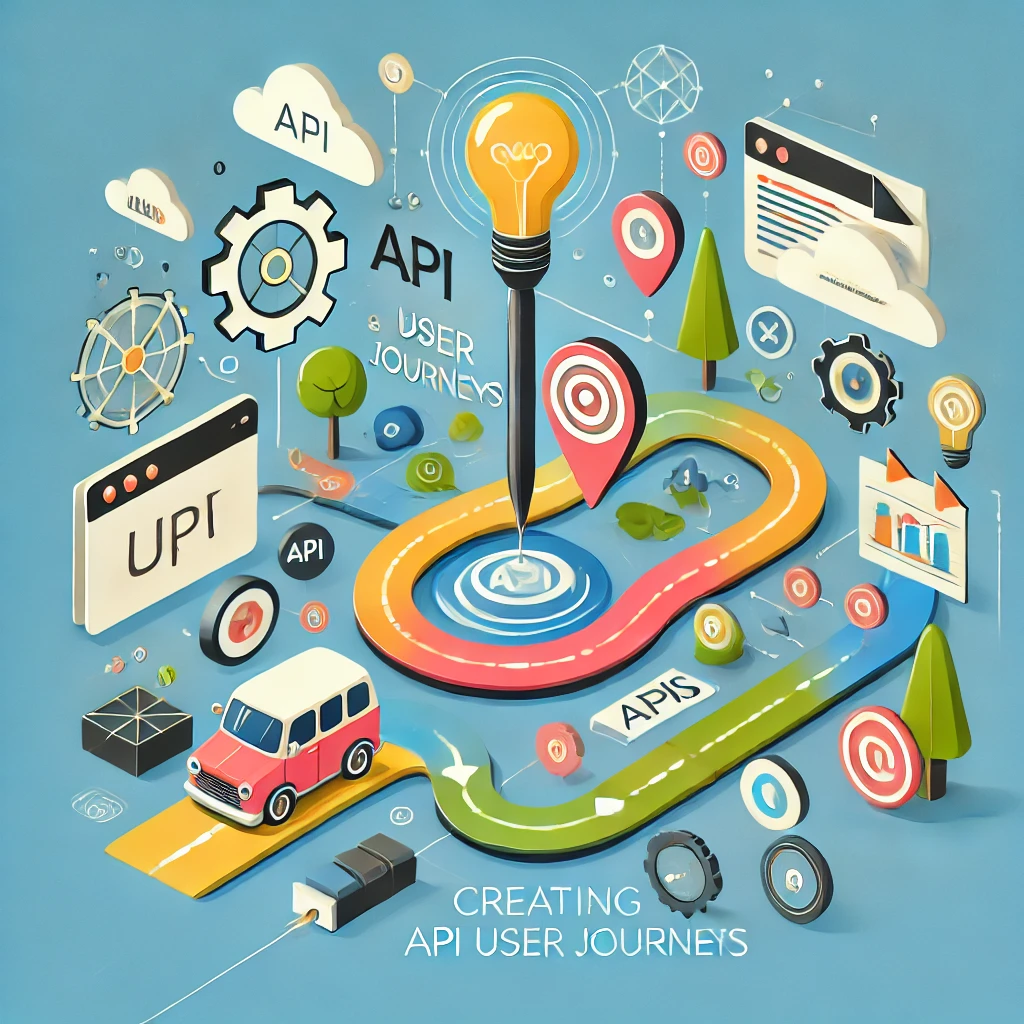Creating API User Journeys with Syncloop

This blog explores how Syncloop can be used to craft API user journeys that enhance user satisfaction and operational efficiency.
What Are API User Journeys?
API user journeys represent the interactions a user (or system) has with an API to accomplish a specific task or objective. These journeys help developers understand:
- Entry Points: How users or systems initiate interactions with the API.
- Transitions: The sequence of API calls and responses during a workflow.
- Pain Points: Challenges users face while using the API.
- Opportunities: Areas to improve user experiences and streamline operations.
Why API User Journeys Matter
- Enhanced User Experience: Designing workflows that are intuitive and efficient improves satisfaction.
- Increased Adoption: User-friendly APIs are more likely to be adopted by developers and integrated into applications.
- Operational Efficiency: Clear journeys reduce errors and resource consumption.
- Scalability: Structured journeys prepare APIs to handle increasing traffic and complexity.
How Syncloop Facilitates API User Journey Creation
1. API Gateway as the First Touchpoint
The API gateway in Syncloop acts as a centralized entry point for all user interactions.
- Features:
- Route requests to appropriate services.
- Authenticate and authorize users.
- Benefits:
- Ensures secure and efficient access to APIs.
- Simplifies journey mapping by centralizing interactions.
- Use Case: Authenticating users before accessing protected resources.
2. Role-Based Access Control (RBAC)
Syncloop enables role-based access to API endpoints, ensuring users only access what they’re authorized to.
- Features:
- Define roles and assign permissions.
- Dynamically adjust access based on roles.
- Benefits:
- Prevents unauthorized access.
- Simplifies designing secure user journeys.
- Use Case: Differentiating access for admin and regular users.
3. Workflow Automation
Syncloop provides tools to automate multi-step workflows, reducing manual interventions.
- Features:
- Orchestrate API calls with conditional logic.
- Trigger actions based on user inputs or system events.
- Benefits:
- Streamlines complex user journeys.
- Reduces latency by automating decision-making processes.
- Use Case: Automating the journey for placing an order in an e-commerce application.
4. Real-Time Data Synchronization
Syncloop ensures real-time data updates across services, keeping user interactions consistent.
- Features:
- Webhooks for event-driven updates.
- Data pipelines for continuous synchronization.
- Benefits:
- Avoids inconsistencies across systems.
- Improves user experience by delivering instant updates.
- Use Case: Reflecting inventory changes immediately after a purchase.
5. Monitoring and Analytics
With Syncloop, developers can monitor API interactions to understand user behavior and identify bottlenecks.
- Features:
- Dashboards for tracking API performance.
- Logs for analyzing user activity and errors.
- Benefits:
- Informs optimization of user journeys.
- Proactively resolves issues before they impact users.
- Use Case: Monitoring response times during high-traffic periods.
6. Customizable Error Handling
Syncloop enables developers to design meaningful error responses, guiding users through failed interactions.
- Features:
- Custom error codes and messages.
- Fallback workflows for error scenarios.
- Benefits:
- Reduces frustration for end-users.
- Improves recovery from failed API calls.
- Use Case: Displaying actionable suggestions for failed payment attempts.
7. Versioning for Evolving Journeys
As APIs evolve, Syncloop supports versioning to ensure backward compatibility while introducing new features.
- Features:
- Define and manage multiple API versions.
- Deprecate older versions gradually.
- Benefits:
- Maintains seamless user journeys during updates.
- Enables phased adoption of new functionalities.
- Use Case: Rolling out new search features while retaining legacy endpoints.
8. Integration with Third-Party Services
Syncloop simplifies integration with third-party APIs and tools, expanding the scope of user journeys.
- Features:
- Pre-built connectors for popular services.
- Flexible API orchestration capabilities.
- Benefits:
- Enhances functionality without additional development overhead.
- Enables cohesive experiences across systems.
- Use Case: Integrating payment gateways into subscription workflows.
Benefits of Designing API User Journeys with Syncloop
1. Improved User Engagement
Intuitive and efficient workflows encourage users to interact with APIs more frequently.
2. Faster Development Cycles
Pre-built tools and automation capabilities reduce the time to implement user journeys.
3. Enhanced Scalability
Structured journeys ensure APIs can handle increased traffic and complexity seamlessly.
4. Better Analytics
Monitoring and analytics tools provide insights to refine user journeys continuously.
5. Stronger Security
Role-based access and centralized gateways protect sensitive data and workflows.
Real-World Applications of API User Journeys with Syncloop
1. E-Commerce
- Creating seamless checkout workflows.
- Managing customer subscriptions and renewals.
2. Healthcare
- Scheduling appointments through APIs.
- Syncing patient records across systems.
3. Financial Services
- Automating loan approval processes.
- Securing multi-step authentication workflows.
4. Education Platforms
- Onboarding new users with progressive tutorials.
- Managing course enrollments and completions.
5. Media and Entertainment
- Streaming personalized content recommendations.
- Handling subscription tier upgrades.
Best Practices for Designing API User Journeys with Syncloop
- Map User Flows Clearly: Identify all touchpoints and transitions in the API journey.
- Automate Where Possible: Use Syncloop’s workflow tools to minimize manual steps.
- Monitor Continuously: Leverage analytics to refine and optimize journeys.
- Focus on Security: Protect sensitive interactions with RBAC and encryption.
- Iterate and Improve: Update journeys based on user feedback and usage data.
The Future of API User Journeys with Syncloop
As API ecosystems grow more complex, Syncloop is enhancing its platform with AI-driven insights, predictive analytics, and advanced automation features. These innovations will make it even easier to design, manage, and optimize user journeys for diverse applications.
Conclusion
Designing effective API user journeys is critical for creating APIs that are user-friendly, secure, and scalable. Syncloop provides the tools and infrastructure to streamline this process, enabling developers to focus on delivering exceptional user experiences.
By leveraging Syncloop’s capabilities, businesses can craft API workflows that align with user needs and drive engagement, ensuring long-term success in today’s digital landscape.
An infographic illustrating a sample API user journey with Syncloop, showcasing entry points, transitions, and workflow automation.
Back to Blogs